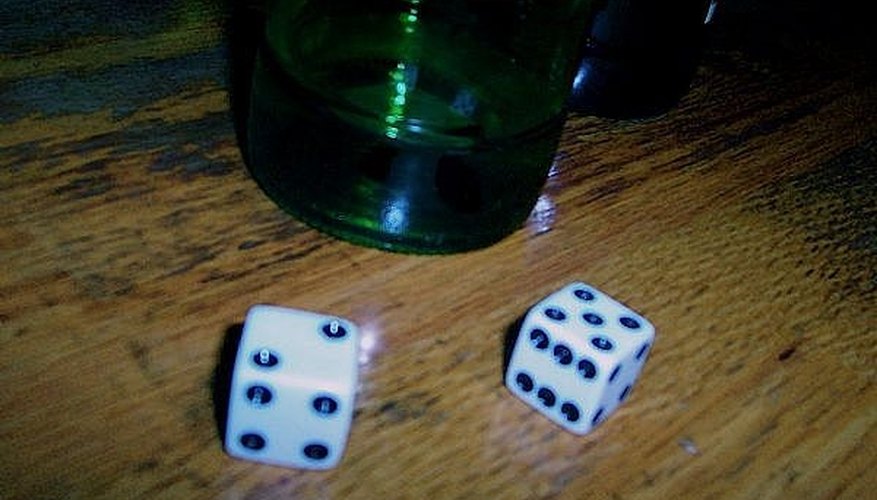7 And 11 Dice
Non-Conventional Dice Roller
Rolling Dice if a player rolls two dice and gets a sum of 2 or 12, she wins $20. If the person gets a 7, she wins $5. The cost to play the game is $3. Find the expectation of the game. There are 7 equally likely ways to roll the 7 sided dice, and 11 equally likely ways to roll the 11 sided dice, for a total of 7 x 11 = 77 equally likely events. We can visualize the sample space as an ordered pair (i, j) for rolling (7 sided dice, 11 sided dice). There are 7 possible ways both dice show the same number. Dice sets, especially 7-piece RPG dice sets. Everything from metal dice sets and stone dice sets to pearlized and magma dice sets. Also includes other sets of dice such as 10d6 crystal dice sets.
Use the following virtual dice roller to mimic dice that have a different number of faces from the conventional 6-faced die. The most common physical dice have 4, 6, 8, 10, 12, and 20 faces respectively, with 6-faced die comprising the majority of dice. This virtual dice roller can have any number of faces and can generate random numbers simulating a dice roll based on the number of faces and dice.
A dice is typically a small, throwable object that has multiple faces (most commonly six) and possible positions that indicate a number (or something else), used for generating random numbers and events. They are typically used for tabletop games, which includes a wide variety of games, as well as for gambling. Examples of tabletop games that involve the use of dice include games like backgammon, Boggle, and Yahtzee, where dice are a central component of the game. Some other well-known tabletop games include Monopoly, Risk, Dungeons and Dragons, and Settlers of Catan. There are however, numerous others.
Dice shapes
The most commonly used dice shapes are shown in the image, and listed below.
- Tetrahedron: 4 faces – the blue die
- Cube: 6 faces – the orange, cubic die
- Octahedron: 8 faces – the green die
- Pentagonal trapezohedron: 10 faces – the orange, non-cubic die
- Dodecahedron: 12 faces – the yellow die
- Icosahedron: 20 faces – the purple die
Although the image shows some of the more common die shapes, there are many other polyhedral dice, or dice of other shapes. There are also non-numeric dice, dice that do not follow a counting sequence that begins at one, and spherical dice.
How random is a dice?
Based on probability, a die should have an equal probability of landing on each of its faces. However, this is not necessarily the case with mass produced dice as they cannot be truly random, since it is difficult to mass produce dice that are uniform, and there may be differences in the symmetry of the dice. Each dice, particularly d20 (20-sided polyhedral dice) and d8 (8-sided polyhedral dice) is often unbalanced, and more likely to roll certain numbers.
How to test how random your dice is:
Although it may not be the most accurate way to test how random your dice is, one relatively quick test you can do involves just a container, some water, and some salt:
- Get a container that can fit the die you want to test
- Fill the container with water, then add salt and the die to the water – if the die doesn't float, add more salt until the die floats
- Flick the die and take note of which side faces upwards – repeatedly flick the dice and record the results
For a well-balanced die, you can expect a variety of numbers. If it is not well balanced, you will be more likely to notice certain numbers occurring more often. However, unless this test is performed numerous times, or the dice is heavily unbalanced, the user is not likely to notice a significant difference.
There are a number of companies that manufacture dice, and some more rigorous tests (than the one described above) have been performed on dice manufactured by different companies in an effort to determine how truly random the dice (mostly d20 dice) are. These studies confirmed that even dice manufactured within the same company under the same conditions can vary significantly from each other, and are not truly random. Some companies produced dice that were more random than others, but even then, were not found to be truly random.
Virtual dice, like the one above, are almost always based on pseudo-random number generating algorithms, which are also not truly random. However, a virtual dice roll is likely more close to true randomness than most physical dice.
7/11 Or Doubles
How To Play 7 11
Game Type: Dice - #
7 11 Dice Game Online

Supplies:
- Beer
- Pair of Dice
- Shot glass
Instructions
- Fill the shot glass full of beer
- Roll the dice
- If it lands on 7,11, or a double, you choose a person to drink
- As they drink, you keep rolling the dice until they put the glass back down, if you get 7,11 or a double they must drink again and you keep going until you don’t get a 7,11 or double.
- When rolling while they drink you may not touch the dice until they touch the shot glass.
- If you roll off the table it is a penalty and you have to drink the shot glass.
654 Dice Game Rules
Credit
7 And 11 In Craps
Chris